The history of the Lexus IS starts with the expansion of the Lexus range in 1998 and the arrival of the IS 200. Slotting into the compact executive market below the GS, the sporting four-door was designed to fight established players in the European market, such as the BMW 3-Series, Mercedes-Benz C-Class and Audi A4. But as you would expect from Lexus, this challenge was approached in a uniquely Japanese way in an effort to strengthen the marque’s values within the luxury car sector following its birth in 1989. This is our journey through the Lexus IS history, stopping off at each generation.
Lexus IS history: first generation
Development began in the mid-Nineties. Chief engineer of the project was Nobuaki Katayama, who had previously worked on the acclaimed, rear-wheel drive AE86 Toyota Corolla before moving on to the company’s Le Mans and rallying programmes.
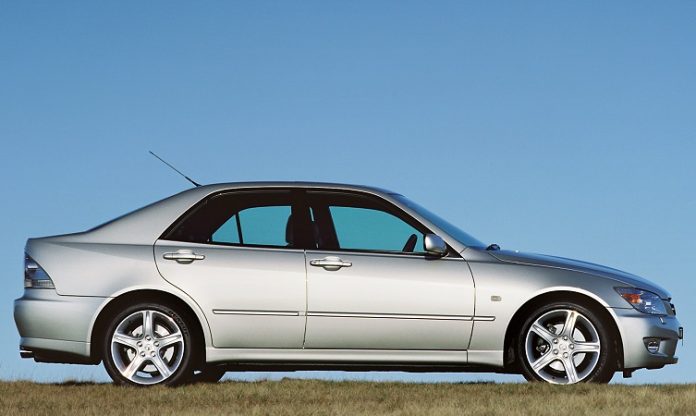
When it was launched in Japan in 1998, the first generation IS was known as the Toyota Altezza as Lexus remained exclusively an export brand until July 2005. It was sold through a chain of dealerships called Toyota Vista Store and it won that year’s Japanese Car of The Year award.
The Lexus IS 200 arrived in the UK in 1999, and was initially available only as a 2.0-litre petrol saloon. Warmly received in the press, it was clearly a driver’s car – as you’d expect from Katayama – and to get the best performance the sweet six-cylinder needed to be revved beyond 4,500rpm. The driver could make the most of this thanks to its precise-shifting six-speed gearbox.
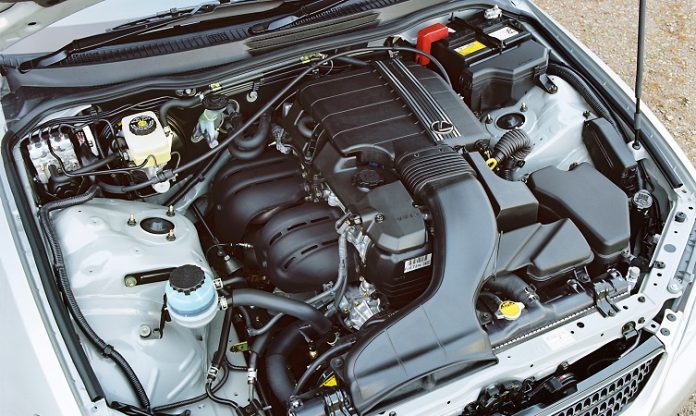
But it was a charismatic addition in a market sector littered with talented cars. However, it was praised for its individual design – especially inside – where the main instruments were designed to look like an upmarket chronograph watch. The sporting driver’s seat gave excellent support in corners, handling was sharp, ride well-damped, and equipment levels, on the SE especially, were high.
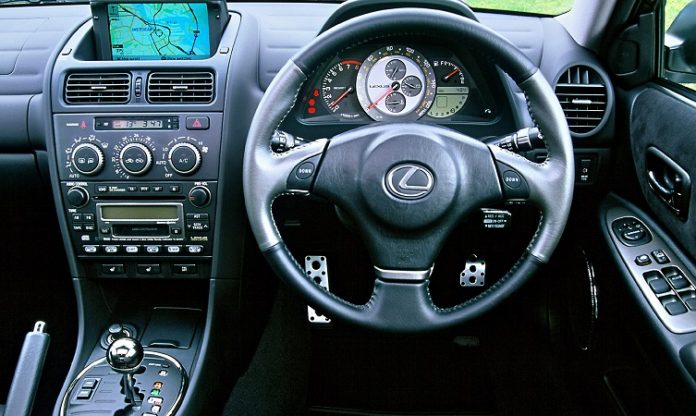
In 2001, the range was expanded to include a 3.0-litre version, known as the IS 300. Power rose from 158 to 220bhp, and top speed improved from 134 to 144mph. At the same time, the five-door SportCross was announced, significantly adding appeal to the range. It was a further addition to the ranks of the lifestyle/crossover estate car market.
The first generation IS remained in production until 2005 and marked a significant milestone in the development of Lexus. It proved the marque’s core values could remain intact further down the price scale.
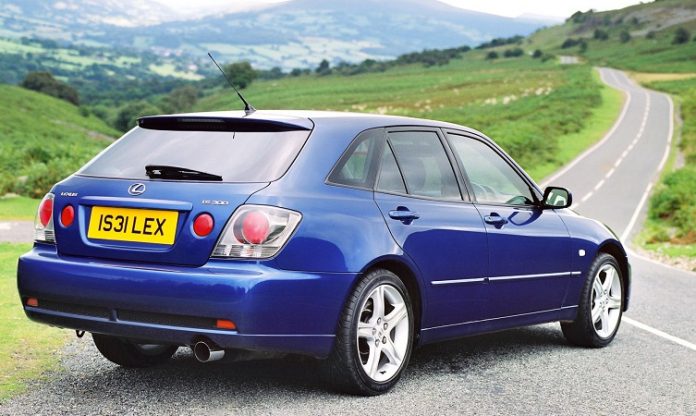
And in the intervening years, the Lexus IS has become a popular choice with enthusiasts, who love its balanced rear-wheel-drive handling and wide tuning options. In addition, the Yamaha-developed 200bhp four-cylinder RS model has proved to be a popular personal import from Japan, despite never being offered for sale officially in the UK.
Lexus IS history: second generation
Building upon the success of the first IS, Lexus launched its second-generation version in 2005. And it really was a case of all change, both visually and technically. The new model was longer and wider and styled to the new Lexus L-finesse design philosophy, allying it visually to the larger GS and LS models. The use of aluminium in its construction managed to keep weight gain down to an acceptable 50kg or so, which is an impressive feat considering the body was also stronger and stiffer.
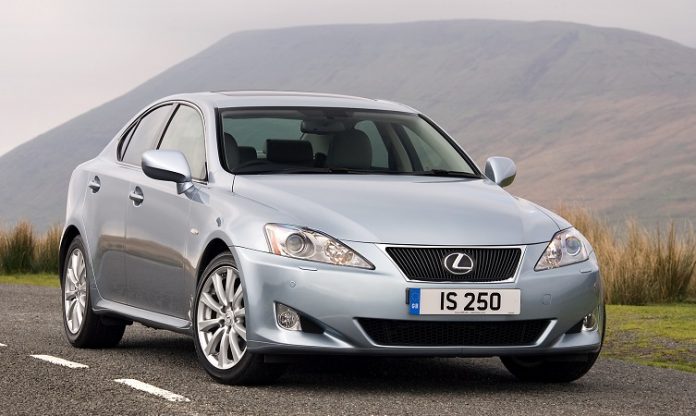
The mixture of relatively compact dimensions, excellent rear-wheel drive handling, and impeccable build quality marked this out as more of the same – despite the differences. And there were many.
In a marketing sense, the model marked an important point in the development of the brand, as this generation was now sold globally under the Lexus banner. As befitting an executive saloon, the range was primarily powered by smooth, six-cylinder engines – now direct injection V6 units rather than straight sixes. In some markets an entry-level four-cylinder petrol engine was available, while this generation was also the first and last to be offered with a turbo-diesel option.
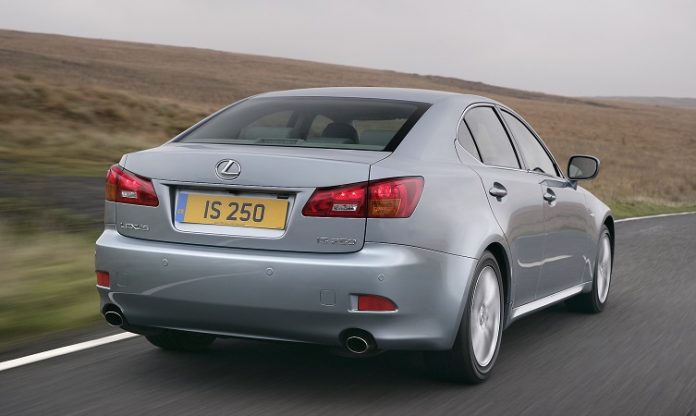
Once again, the Lexus IS majored on delivering a sporting drive, with the bulk-seller in the UK – the 2.5-litre V6 IS 250 – being a car that thrived on revs to deliver its best performance. This was no hardship, as the engine was both quiet and smooth, and the six-speed gearbox light and positive to use.
Like its predecessor, the handling and ride were both excellent: the double-wishbone suspended IS was firm and well-damped, giving the driver plenty of confidence, feeling especially surefooted at high speed.
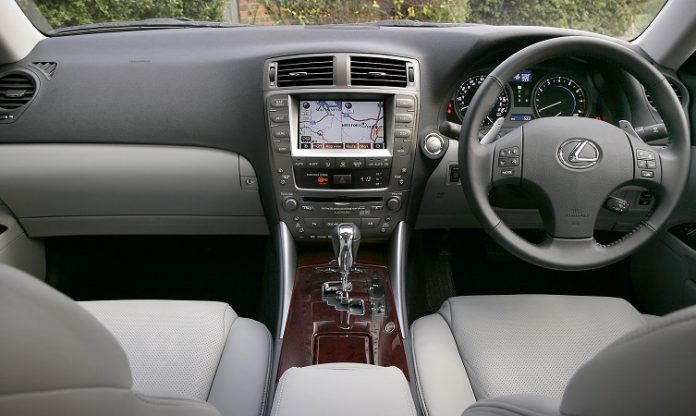
Talking of speed, the 417bhp 5.0-litre V8-powered IS F model was added to the range in 2007. Developed by a small skunk works team led by chief engineer Yukihiko Yaguchi (see image below), the high-performance IS F was pitched directly at established mid-size super-saloons such as the BMW M3, Mercedes-Benz C63 AMG, and Audi RS4.
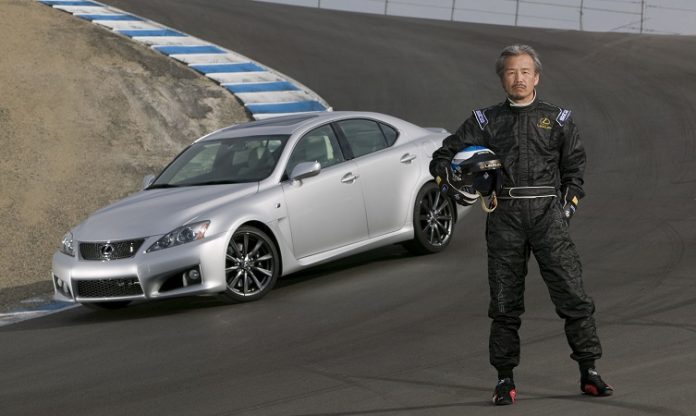
The IS F was genuinely race track-bred, with extensive development testing at the Fuji Speedway in Japan and on Germany’s renowned Nürburgring. As a thoroughbred, it was engineered with dedicated performance components, from its engine, transmission and suspension to its wheels and tyres.
A year later, the versatility of the IS was further explored with the unveiling of the coupe-cabriolet IS 250C, delivering a second body style to the range to coincide with the 2008 facelift. Notable features of the new thee-part retracting hard-top Lexus were that it maintained much of the saloon’s refinement when the roof was up, and that it folded itself away faster than any similar roof on the market.
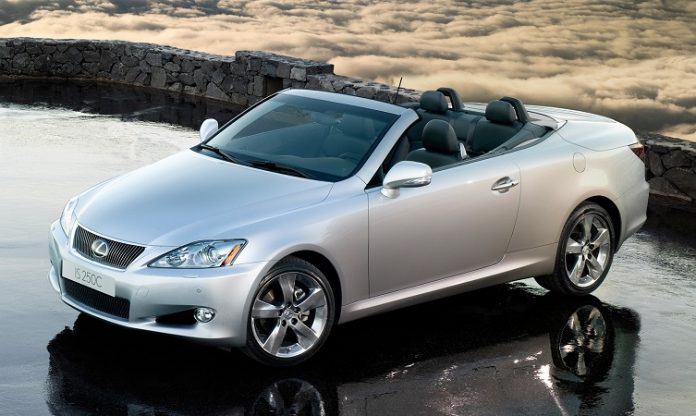
Development of the second-generation Lexus IS continued throughout its life – so in 2010, the diesel-powered IS 220d was de-tuned by 25bhp to become the cleaner, more economical IS 200d. A number of styling changes were also incorporated, including the arrival of the popular F Sport model, which offered a little extra sporting style.
History of the Lexus IS: third generation
Six months ahead of its UK launch, the third-generation Lexus IS was unveiled in January 2013 at the Detroit motor show. As well as displaying more distinctive styling inside and out, Lexus engineers adopted an entirely different approach to the development of this new model. Chief engineer Junichi Furuyama explained: “Rather than develop each individual aspect in the hope they will combine to offer an engaging driving experience, we first established the kind of driving experience owners desire. With this as our initial premise, we then developed the individual performance elements to support it.”
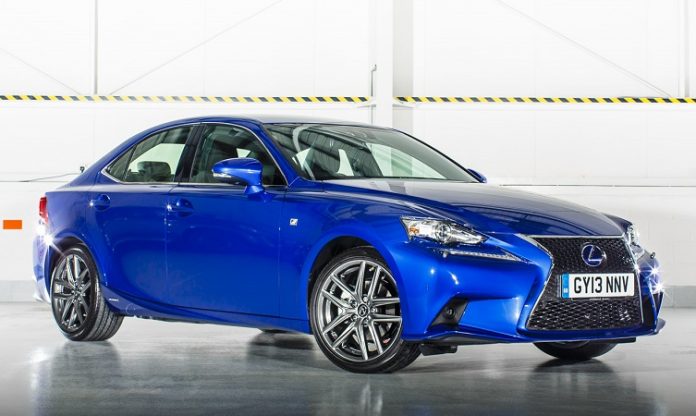
Driving performance had always been a key quality of the Lexus IS, so this remained the prime consideration. And in so doing, the car benefitted from a dozen Lexus-first features and technical innovations, not to mention best-in-class rear space and a larger, more user-friendly boot.
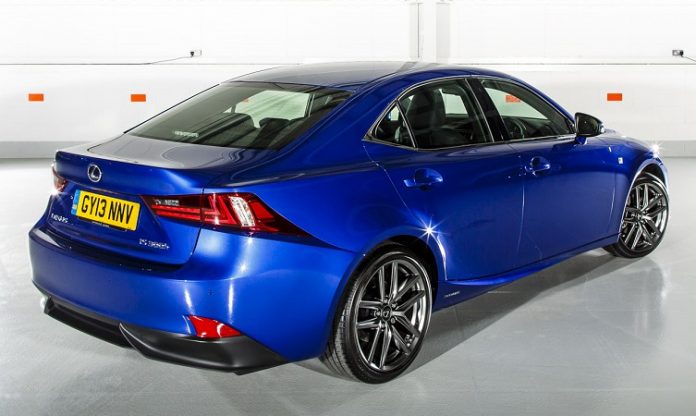
The bodyshell was exceptionally rigid, being constructed from a new combination of laser screw welding, traditional spot welds, and adhesive bonding techniques, while the sophisticated multi-link suspension was similar to that in the contemporary GS model. Drivers could also use a new Drive Mode Select system to switch between three driving models to achieve their preferred balance of economy, comfort, performance and handling. F Sport models were also available, offering a specially tuned suspension set-up and unique styling features.
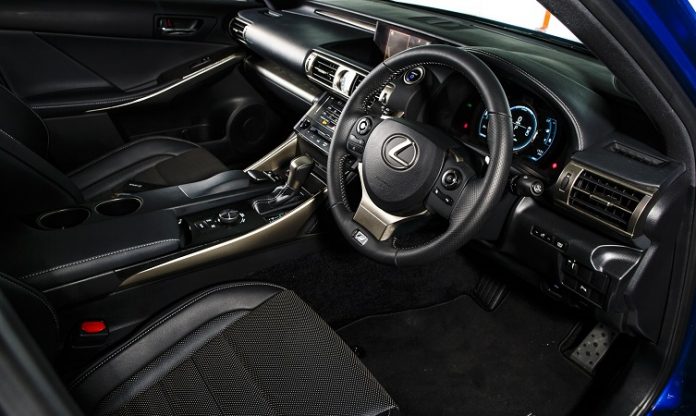
In terms of appearance, the third-generation IS was inspired by the LF-CC concept yet with a composite headlight cluster and a unique interpretation of the spindle grille. The mass of the cabin was concentrated towards the rear, with a distinctive character line rising from the lower body into the rear lenses. Meanwhile on the inside, the LFA-inspired cockpit offered sports car-like ergonomics and innovative electrostatic switches for the air conditioning system.
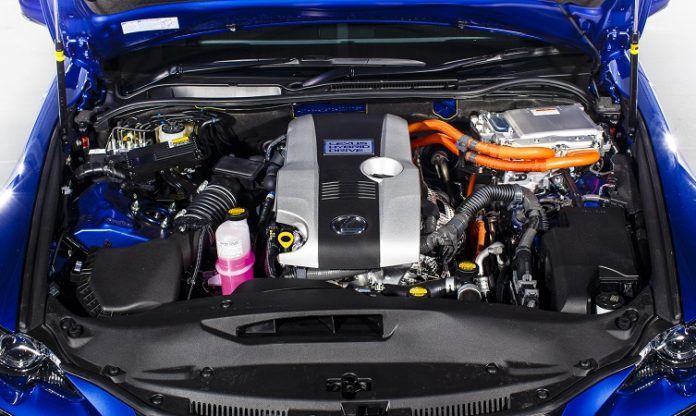
In the UK market, the new IS was initially available with two powertrain options: an IS 250 with the familiar 2.5-litre V6 petrol engine carried over from the previous generation, or a new full hybrid IS 300h, which used Lexus Hybrid Drive to combine a powerful electric motor with a newly developed 2.5-litre four-cylinder Atkinson cycle engine. The latter offered significant ownership savings, such as being clean enough to dip below the 100g/km threshold for zero annual road tax.
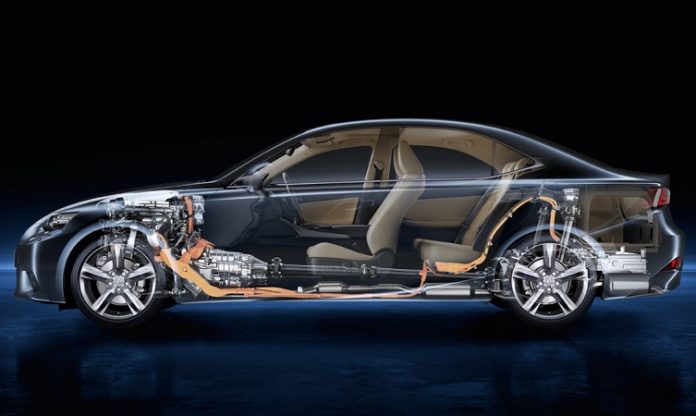
A couple of years later, in September 2015, a new IS 200t model with a downsized and turbocharged 2.0-litre petrol engine was introduced as a replacement for the 2.5-litre V6. It was mated to an eight-speed automatic transmission originally developed for the high-performance RC F coupe. However, as more than 90% of IS buyers continued to chose the IS 300h model, the slower-selling IS 200t was discontinued approximately two years later.
A mild revision in 2017 (see image below) further fine-tuned the IS in a number of key areas and brought it up-to-date with the latest safety technologies. The majority of models now adopted Lexus Safety System+, a set of active safety features designed to help prevent or mitigate collisions in a wide range of traffic situations.
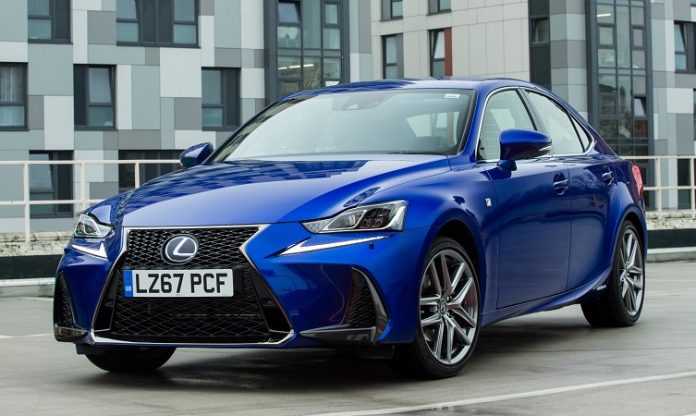
Worldwide sales of the Lexus IS broke the one million mark in August 2016, with European sales accounting for almost 20% of that figure. Within the UK, the IS generated strong sales for more than two decades, and until the launch of the more affordable Lexus CT it was consistently our best-selling model line. But as luxury car buyers began their transition from saloons to SUVs, the balance of the sales within our small- to mid-size models tipped heavily towards the NX and, more recently, the UX. As a result, official sales of the Lexus IS concluded in the UK in 2021, after a grand total of 88,837 units had been sold.
All information was correct at the time of publishing.
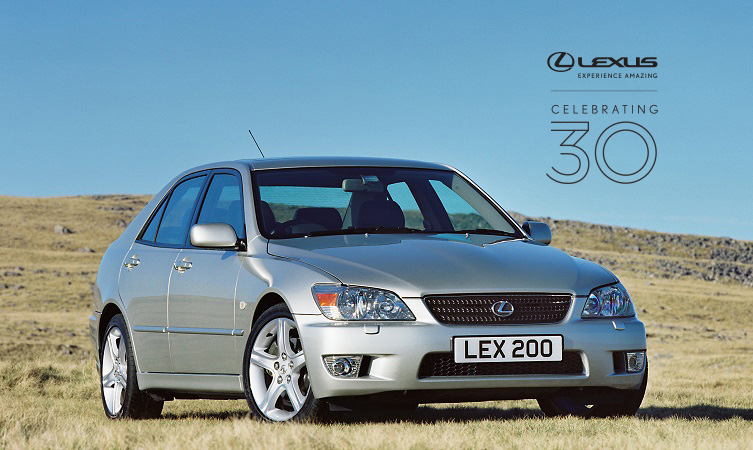




It is a shame the next IS model won’t be exported to Europe.
Not everyone wants an SUV/crossover. If the new series was marketed right then it would make a great alternative to the other prestige makes eg 3 series, C class and Audi A4. The lack of powertrain options is a problem as well. Other markets get the other engines.
The CT is due a refresh as well. The IS is being made to experience a slow death along with the GS.
Despite all this, I love the bramd.
Hi AA,
Thanks for getting in touch. We’re sorry to hear you’re unhappy with this. Roughly 80% of all Lexus models sold in Europe are now SUVs and the larger ES is outselling the current IS at a rate of around two-to-one, so the decision was made not to introduce this new IS model here.
As a fan of the IS, you might find the ES suitable for your driving needs. You can take a closer look here: https://www.lexus.co.uk/car-models/es/#hero
Thanks.
Shame the IS is to end – just as you finally got the interior fixed and Apple CarPlay in it! CT too small and out-of-date, ES is too big (and the dashboard looks kinda old-fashioned to me – not driver-oriented and sporty like the IS) don’t want an SUV, so nothing left in the range for me now.
Still, I’ll have my memories of the good times with the IS – it was fun while it lasted 🙁
Hi Jules,
Thanks for your feedback. ES has outsold IS 2:1 and 80% of our sales since the beginning of 2019 have been SUVs. As a business, we taken the decision to streamline our product offering in Europe. We are sorry for the disappointment this will cause some of our customers, like yourself. Of course, there are plenty of Approved Used examples available, so your IS ownership can live on.
Thanks
Thanks
Shocked to learn no IS range, in my opinion it was perfection.
ES to big and dated design, CT way to small that only leaves SUV so I must say bye. The IS filled that gap perfect sized sports feel sedan.
Need to go back and look at what Audi has to offer, real shame as the IS300 is the best car I ever drove.
Hello Mark,
Thank you for contacting us. We’re sorry for the disappointment caused in the streamlining of our product offering.
There are plenty of Approved Used examples of the IS should you wish to continue your ownership journey with this particular model.
We’d also recommend taking a look at the 2021 ES, which debuted at Shanghai Motor Show earlier this year: https://mag.lexus.co.uk/2021-lexus-es-makes-its-debut-in-shanghai/.
Thanks.
My 2001 model IS 200 has been totally reliable over the 18 years that I have had it and is still source of driving pleasure. I view it as a future classic.
Hi Paul,
We agree. Wishing you many more happy miles.
Thanks
Looking at acquiring a used IS250 for my retirement now I’m out of company cars (mostly BMW 3/ 5; MB E-class level.
I’m trying to make sense of the 2nd generation model/ trim line-up, as the adverts I’ve seen are not clear on what is standard equipment vs up-speccing.
Is there a site to see the trim levels/ price lists/ standard equipment so I can understand better? I’m looking to spend around £6,500 – £8,500, which seems to equate to 2008 – 2010 (approx).
Any advice/ pointers gratefully received!
Hello Stewart,
Thank you for contacting Lexus.
Your nearest Lexus Centre would be best placed to assist you with this query.
You can find them here – https://www.lexus.co.uk/forms/find-a-centre
Thanks.
I want the new generation of IS in UK please, its my dream car, enough of this SUVs
Deal Lexus-Team,
I learned, that the Lexus IS500 is only planend for the American market. It is a great dissapointment, that this model will not be available in Europe (Germany). I really would like to choose a four-door sedan, with this magnificent 5.0 NA V8 instead to go with an twin-turbo aspirated engine with all the known issues. Unfortunately this engine is only selectable together with two-door coupes. Lexus should really re-evaluate the decision as counterpart to the numerous available Hybrid-Models.
Trank you.
Kind regards.
Hello Holger, thanks for your comment.
That is correct, the IS is no longer offered here in the UK. We do however, offer the Lexus ES.
You could also look into importing the vehicle of your choice.
Thanks.
Hello Lexus UK (Europe),
thank you for the quick answer. Is Lexus Europe thinking about this option helping the – let’s say – interested parties to achieve it?
If not, the necessary clarification concerning adaptation to the European standards, the handling in the repair shop and the important guarantee items, in case if needed even though the car manufacturer is well known for the best reliability, becomes some sort of insuperable for a private person.
Thank you.
Kind regards.
H. K.
Hello Holger,
Thank you for your reply.
We would recommend contacting your nearest Lexus Centre to see what options are available regarding importing a vehicle.
Furthermore, they will be able to advise if your imported vehicle would conform to European standards.
Thanks.
Hello Lexus UK (Europe),
unfortunately, the dealer is not willing or able to support the customer here. I’m not sure if that’s the preferred or ideal solution. I would wish that Lexus as a manufacturer would also offer this model in Europe in order to be able to offer customers a complete package – including a warranty and the necessary settings/configuration. It is really a pity that a market as large as Europe is being “left to the hands” of European competition and customers are no longer able to enjoy a wide range of engines and reliable vehicles. What a shame. Lexus should reconsider this decision, because there are indeed customers who are asking for such vehicles.
Kind regards.
H. K.